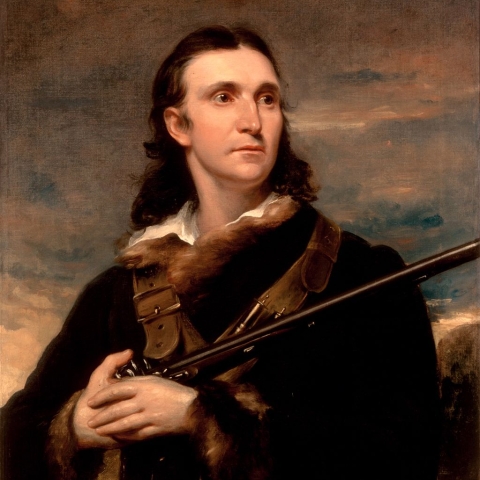
About John James Audubon (1785-1851)
Neither this little stream, this swamp, this grand sheet of flowing water, nor these mountains will be seen in a century hence, as I see them now. The fishes will no longer bask on the surface, the eagle scarce ever alight and these millions of songsters will be drove away by man. Oh America – Look upon her, see her grandeur. Nature still nurses her, cherishes her, but a tear flows in her eye.
John James Audubon was born in Saint Domingue (Haiti) in 1785, the illegitimate child of a French plantation owner and his mistress. Audubon’s mother died shortly after his birth and he returned, with his father to France, where he spent the remainder of his childhood. He took a keen interest in nature from an early age, particularly in birds and drawing. In 1803, Audubon was sent to the United States where he married, started a family, and went into business. His business career flourished for many years, but Audubon suffered a series of setbacks that left him destitute by the year 1819. In 1820, Audubon committed himself to painting all of the birds of North America in life size. His artistic style was very different for the times, as he painted birds in exquisite detail and many of his works were so realistic they seemed “alive.” By 1838 Audubon accomplished his task of painting the “Birds of America,” all 435 original watercolors currently reside at the New York Historical Society. Audubon lived at a time when America was in transition from a land largely comprised of wilderness to one that was increasingly being altered by humans. He recognized this clearly in 1843 when he went West and witnessed the devastation of the vast buffalo herds and Native Americans. His paintings and writing influenced other American writers (e.g. Thoreau and Emerson) who collectively brought about the conservation movement in the second half of the 19th century.
This plaque was created by SUTL Cohort 36.